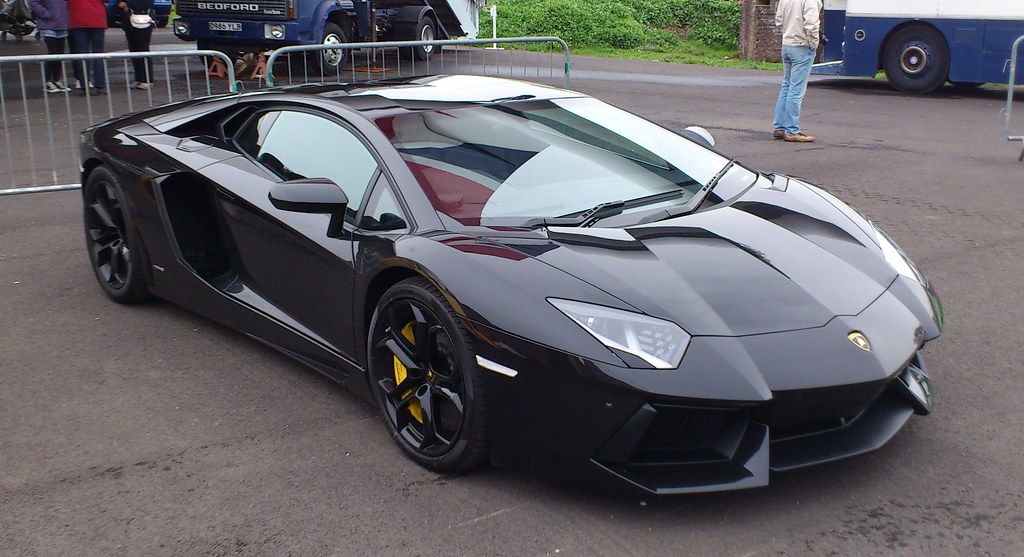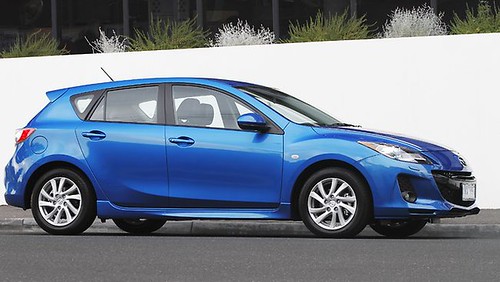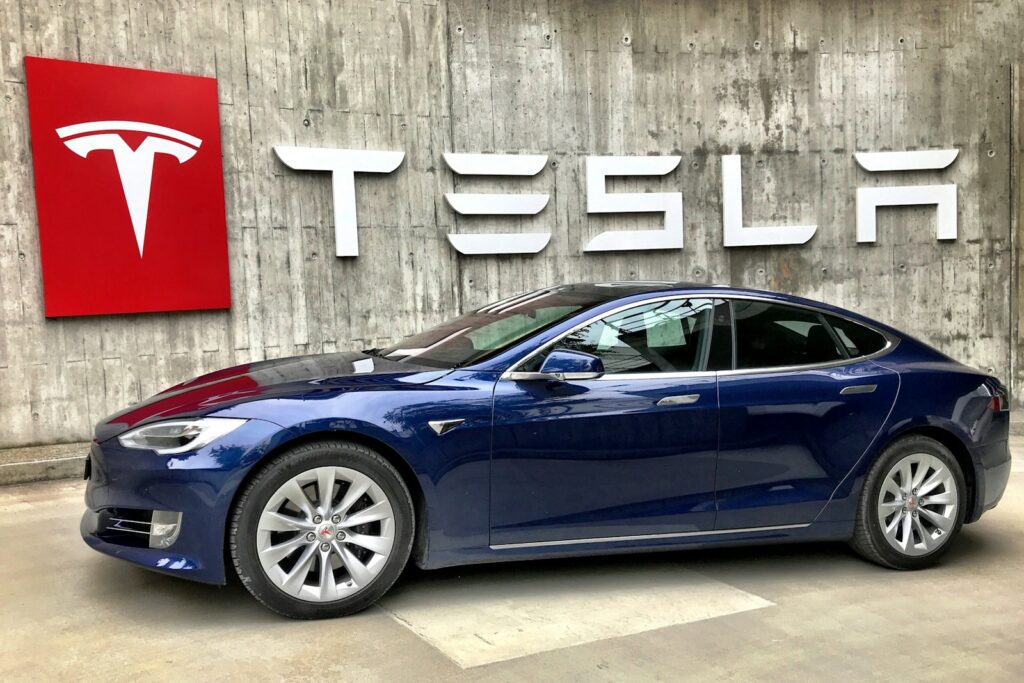
In the rapidly evolving landscape of electric vehicles, one component stands paramount in determining a vehicle’s true long-term value and ownership experience: the battery pack. Unlike the more predictable wear and tear of internal combustion engines, an EV battery represents a substantial, expensive, and sensitive heart of the vehicle. Its durability dictates not just daily range, but the car’s reliability, resale value, and even its lifespan on the road. A resilient battery can mean a decade or more of dependable transportation, while a failing one can lead to costly replacements, frustrating limitations, or even premature vehicle retirement.
Battery longevity extends beyond merely how far a car can travel on a single charge; it encompasses the battery’s ability to maintain its original capacity and health over time. While all EV batteries naturally degrade, typically losing a few percentage points of capacity annually, some manufacturers have engineered superior solutions. These brands excel at minimizing degradation through intelligent thermal management, conservative charging protocols, and advanced cell chemistry, ensuring their vehicles age gracefully and serve owners for many years without significant battery intervention. For consumers planning to keep their EVs beyond the warranty period or those considering a used EV, battery durability is often the defining characteristic of a car’s real worth.
Conversely, some EV brands, whether due to engineering shortcuts, cost-cutting measures, or early-generation missteps, have garnered reputations for frequent battery issues. These problems can manifest as accelerated degradation, poorly designed battery management systems, inadequate cooling, or manufacturing defects leading to early battery replacements. Such issues impact not only range but also resale value, warranty utilization, and, in some cases, safety. With replacement costs ranging from several thousand to over $20,000, scrutinizing a battery’s long-term prospects is as crucial as evaluating an engine or transmission in a gasoline-powered car. This article will break down five EV brands recognized for their outstanding battery longevity, offering insights into what makes their power packs stand out.
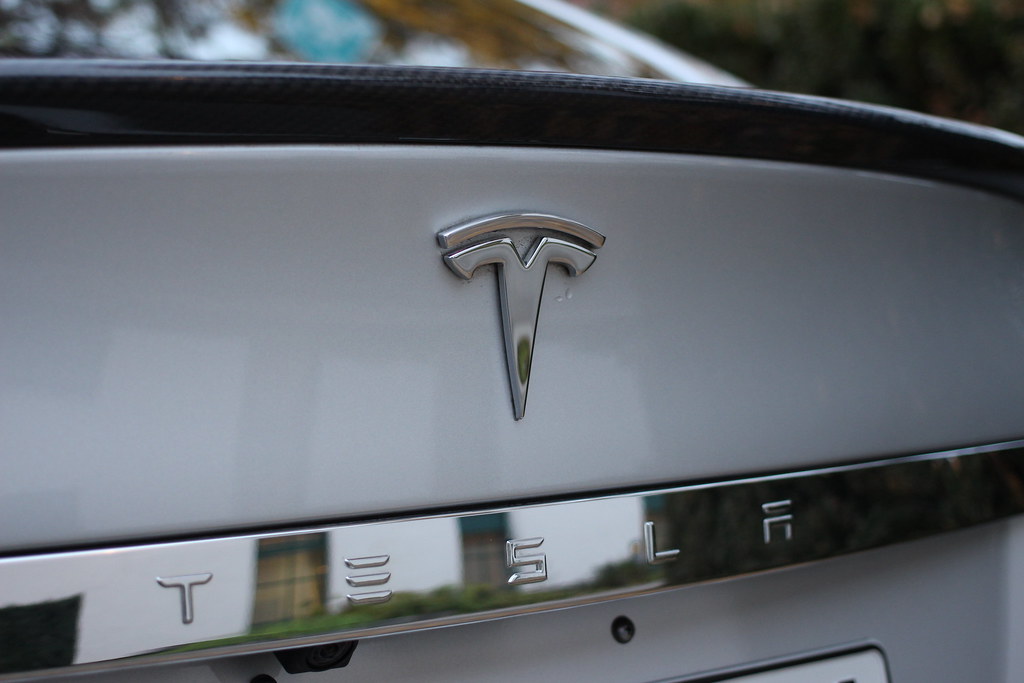
1. **Tesla**
Tesla is widely regarded as the benchmark for electric vehicles, a reputation largely built on its unwavering commitment to battery technology. From its inception, Tesla invested heavily in battery research, initially partnering with Panasonic for high-quality lithium-ion cells. Over time, the company moved towards vertical integration, developing its own battery manufacturing processes, including the highly anticipated 4680 cell technology. Tesla’s batteries are renowned for their high energy density and robust cell design, delivering not only impressive driving ranges but also extended battery life over many years of ownership.
The company’s proprietary battery management system (BMS) plays a crucial role in regulating charge cycles, discharge levels, and temperature, effectively preventing premature battery degradation. This meticulous focus on intelligent battery care has made Tesla vehicles a preferred choice among high-mileage EV drivers. Furthermore, Tesla’s advanced thermal management systems, among the most sophisticated in the industry, utilize liquid cooling loops and precision temperature controls. These systems ensure the battery pack operates within an optimal temperature range, safeguarding against thermal extremes that can accelerate aging, a common issue in EVs with less effective thermal controls.
Even when utilizing its fast-charging Supercharger network, Tesla’s software intelligently adjusts charging rates to preserve battery health under less-than-ideal conditions. This strategic balance between charging convenience and battery longevity is a key reason why Tesla batteries often exceed 150,000 miles with minimal capacity loss. Another significant factor contributing to Tesla’s impressive battery life is its approach to battery utilization; the company deliberately does not allow full access to the battery’s total theoretical capacity. While this slightly reduces the advertised range, it ensures the battery can maintain a higher percentage of its original capacity over a longer period.
Tesla’s dedication to battery health extends to its software features, including scheduled charging, the option to limit daily charging to 80–90%, and adaptive energy management delivered via regular over-the-air updates. These features are meticulously designed to enhance performance and convenience while fundamentally preserving battery longevity for years to come. Real-world data strongly corroborates Tesla’s claims: numerous Model S vehicles with over 300,000 miles on the odometer have shown remarkable capacity losses of only 10–15%, a testament to their engineering when compared to many other EVs.
Peace of mind is further bolstered by Tesla’s battery warranties, typically spanning 8 years and ranging from 100,000 to 150,000 miles, depending on the specific model. While performance-oriented models like the Model S Plaid may impose greater strain due to extreme acceleration, Tesla’s software intelligently compensates by optimizing energy draw and thermal conditions. This holistic approach—encompassing chemistry, cooling, software, and charging protocols—solidifies Tesla’s position as one of the most reliable names in battery longevity, often serving as a decisive factor for many EV buyers.
Read more about: From the Silver Screen to the Garage: Uncovering the Fate of Hollywood’s 14 Most Iconic Movie and TV Cars
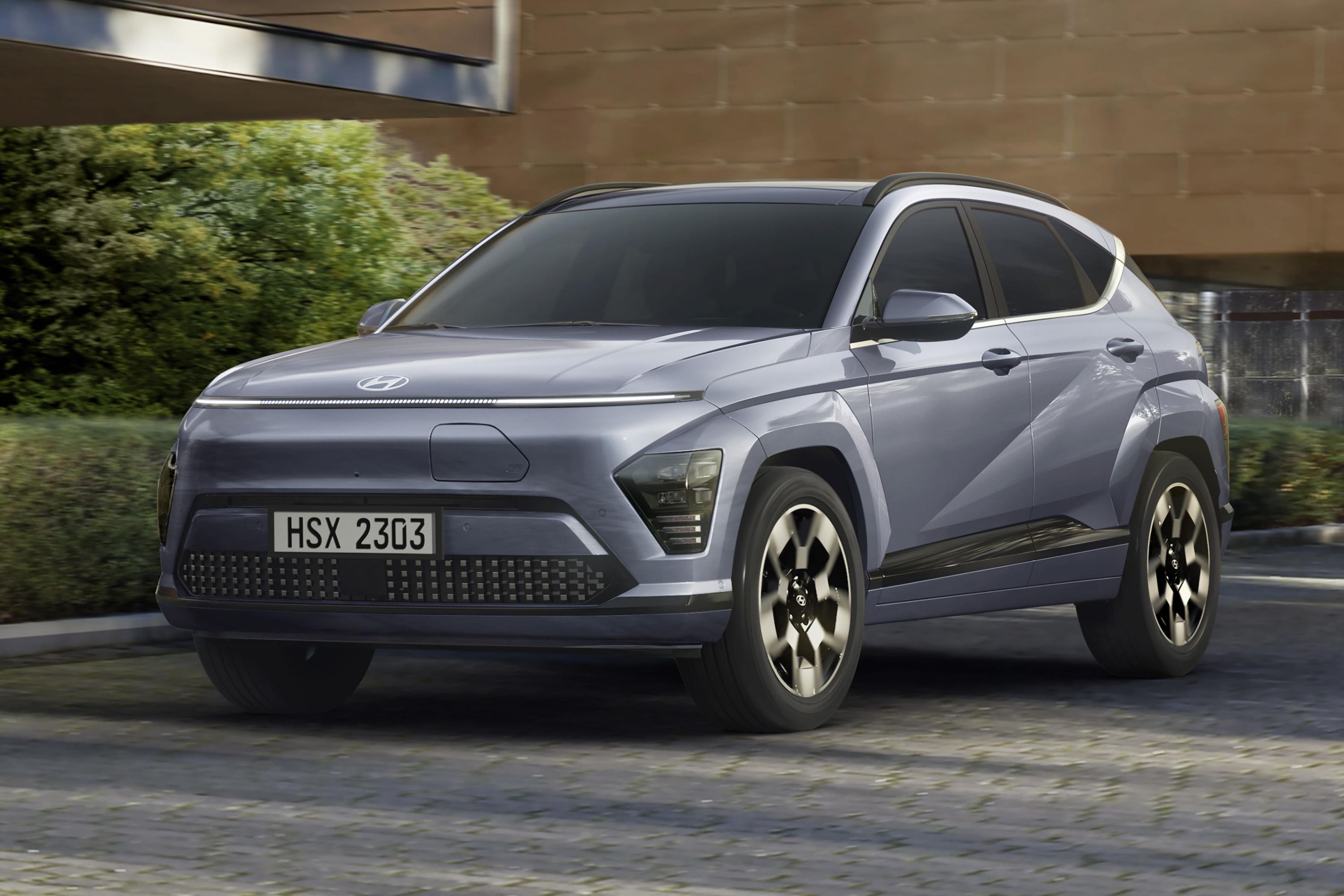
2. **Hyundai/Kia (Hyundai Ioniq & Kia EV6)**
Hyundai and Kia, components of the Hyundai Motor Group, have rapidly risen as prominent leaders in the EV sector, thanks to their commitment to producing reliable and enduring battery technology. Their standout vehicles, particularly the Hyundai Ioniq series and the Kia EV6, are engineered on the advanced E-GMP (Electric Global Modular Platform), which is meticulously designed with battery efficiency, robust thermal regulation, and long-term reliability as core tenets. These vehicles incorporate sophisticated lithium-ion battery cells, seamlessly integrated with advanced battery management systems that ensure consistent performance over many years of usage.
Hyundai and Kia have adopted a balanced yet innovative strategy, prioritizing both performance and longevity in their battery systems. This cautious but effective approach has earned them significant user satisfaction and widespread industry respect. A critical element contributing to the exceptional battery longevity in Hyundai and Kia EVs is their cutting-edge thermal management. These vehicles feature advanced liquid cooling systems combined with intelligent climate control integration, which work in harmony to maintain ideal battery temperatures during driving, charging, or idling. This ensures that whether facing freezing winter conditions or scorching summer heat, the system automatically fine-tunes thermal levels to alleviate stress on the battery cells, thereby mitigating the rapid degradation often caused by temperature extremes in lithium-ion batteries.
Beyond hardware, the charging software in these vehicles is specifically programmed to moderate fast-charging frequency when it’s not strictly necessary. It even adapts to previous charging behaviors, optimizing battery health proactively. For instance, if the car detects a pattern of frequent high-speed charging, it may automatically adjust the charge rate to prevent long-term damage. Hyundai and Kia further solidify their confidence in their battery technology with industry-leading warranties, often providing 8 to 10 years or 100,000 miles of coverage on their EV batteries, a clear reflection of their manufacturing quality and engineering prowess.
Real-world observations underscore these commitments. Many owners of the original Hyundai Ioniq Electric have reported less than 10% capacity degradation even after accumulating over 150,000 kilometers of driving. The newer Ioniq 5 and Kia EV6, benefiting from more efficient powertrains and enhanced cooling technology, are projected to achieve even better long-term performance. This level of reliability is particularly advantageous for consumers in areas with developing EV infrastructure, where battery replacement could pose significant logistical and financial challenges.
Hyundai and Kia’s intelligent software choices also play a pivotal role in extending battery life. Their energy recuperation systems (regenerative braking), customizable charge scheduling features, and battery conditioning tools collectively work to minimize wear. Moreover, their EVs are designed with a deliberate reserve capacity at both the upper and lower ends of the battery’s charge level, strategically avoiding full charge or discharge conditions that can damage the battery. This engineering philosophy prioritizes delivering a consistent and long-lasting EV experience over simply pursuing aggressive range figures or ultra-fast charging times, firmly establishing Hyundai and Kia among the top contenders for battery longevity in today’s competitive EV market.
Read more about: Beyond the Hype: Dissecting EV Battery Longevity and Performance in the Real World

3. **Toyota (bZ4X and Prius Prime Plug-In Hybrid)**
Toyota has long been a trailblazer in hybrid technology, an extensive experience that has fostered a profound understanding of battery longevity. Although its journey into full battery-electric vehicles (BEVs) has been more measured compared to some rivals, Toyota’s hybrid systems, epitomized by the venerable Prius and the plug-in hybrid Prius Prime, have demonstrated exceptional durability over decades. With more than 20 years of accumulated data and millions of hybrid vehicles sold, Toyota has meticulously refined its battery management techniques, consistently prioritizing long-term performance and reliability, sometimes at the expense of metrics like rapid acceleration or ultra-fast charging capabilities.
The bZ4X, Toyota’s contemporary entry into the full-electric segment, directly benefits from these established, protective battery strategies. These include conservative state-of-charge buffers and precise thermal regulation mechanisms. Toyota’s core battery philosophy is fundamentally anchored in reliability, favoring a cautious approach over higher-risk, aggressive performance. The classic Prius, for instance, maintains its battery charge within an optimal range of approximately 40% to 80%, deliberately avoiding both full charging and full discharging. This proven strategy significantly extends battery life and is now a foundational principle in Toyota’s burgeoning electric offerings.
In line with this tradition, the bZ4X features a relatively modest charging curve that is designed to prevent ‘fast charging abuse,’ thereby diligently safeguarding battery integrity. While this engineering choice may temper ultimate charging speeds or maximum range figures, its primary benefit is a dramatic reduction in the long-term wear on the battery cells. Toyota further employs a combination of passive and active cooling techniques across both its plug-in hybrids and BEVs. These systems are crucial for maintaining stable battery temperatures, which is essential for preserving chemical balance and minimizing thermal stress, especially under varied operating conditions.
What truly distinguishes Toyota is its meticulous approach to testing and real-world validation prior to the commercial launch of new battery technologies. Unlike some manufacturers who might accelerate product launches, Toyota adopts a deliberately cautious methodology, subjecting its battery chemistries to rigorous, long-term testing under diverse conditions before approving them for mass production. This ‘slow-but-sure’ strategy translates into fewer recalls, a higher degree of satisfaction among long-term owners, and consistently robust performance over extended periods.
Moreover, Toyota consistently underpromises and overdelivers. Numerous owners of hybrid Prius models report that their batteries last well beyond the warranty period with negligible capacity degradation, and early indicators from the bZ4X suggest that this trend of exceptional durability will continue within their BEV lineup. While some critics may contend that Toyota has been overly conservative in the competitive EV race, this measured restraint has undeniably served its customers well. For many consumers, particularly those in rural areas or regions with extreme climates, battery reliability and longevity far outweigh instantaneous acceleration figures or ultra-fast charging times. Toyota’s steadfast commitment to durability is evident in both its vehicles’ hardware and its sophisticated software, charging logic, and long-term serviceability. For those seeking an EV that may not dominate performance charts but is highly likely to remain a dependable workhorse a decade down the line, Toyota’s expanding electric vehicle lineup merits serious consideration.
Read more about: Smart Buys for Families: 13 Used Cars Under $15,000 That Mechanics Trust for Long-Term Reliability

4. **BMW (i3, i4, and iX series)**
BMW’s entry into the electric vehicle market, while initially cautious, has proven to be highly strategic. Starting with the innovative i3, BMW established a strong foundation for battery durability through meticulous engineering and sophisticated software optimization. Despite its distinctive and sometimes unconventional aesthetics, the i3 quickly earned acclaim for its reliability and impressive battery longevity. BMW has skillfully integrated the valuable lessons learned from the i3 into its newer electric offerings, such as the i4 and iX, both of which embody a mature and comprehensive approach to electric powertrain and battery integration. These vehicles are meticulously engineered with a strong emphasis on energy efficiency, precise regenerative braking control, and modular battery pack designs that adeptly manage heat and age gracefully.
BMW utilizes premium-grade battery cells, often sourced from industry-leading manufacturers like CATL and Samsung SDI, seamlessly integrating them with its proprietary battery management system (BMS). This BMW-developed BMS is specifically engineered not only to optimize range and performance but also to proactively extend cell health over the long haul. Intelligent charging algorithms, combined with adaptive regenerative braking that intelligently adjusts based on driving behavior, significantly help in reducing unnecessary strain on the battery. Essentially, the vehicle ‘learns’ how to best protect its own battery over time, a feature that consistently receives high praise from many BMW owners.
Complementing these intelligent systems is the inclusion of advanced cooling systems featuring multiple thermal zones. These ensure that the battery remains evenly cooled across its entire structure, effectively preventing the formation of hotspots that can accelerate wear and degradation. BMW also meticulously ensures that its batteries are neither overused nor overexerted. Akin to Tesla and Toyota, BMW vehicles typically incorporate a buffer of unused capacity at both the upper and lower extremes of the battery’s charge spectrum. This means that under normal operating conditions, the battery cells are never fully charged or completely discharged. This deliberate limitation significantly extends the usable lifespan of the battery.
While this engineering choice might lead to a slight reduction in the theoretically available range, its paramount benefit is ensuring that the battery consistently operates within a safe and stable state. Owners of the i3, many of whom have accumulated over 150,000 miles, frequently report only moderate degradation, a testament largely attributed to these robust protective strategies. This real-world performance underscores BMW’s commitment to engineering long-lasting electric vehicles that retain their integrity over extended periods of use.
Further distinguishing BMW is its proactive customer support and transparent battery warranty terms. Most of their electric vehicles come with comprehensive 8-year/100,000-mile warranties. Crucially, BMW has also demonstrated transparency in how it addresses battery issues that may arise beyond this period. Their certified pre-owned EV program includes thorough battery inspections and guarantees, positioning BMW as one of the select luxury brands that consistently prioritize battery longevity from both a technical and a customer experience perspective. For discerning individuals seeking premium electric vehicles that elegantly blend high performance with real-world durability, BMW undeniably remains a compelling and highly trustworthy option.
Read more about: Beyond the Hype: Dissecting EV Battery Longevity and Performance in the Real World

5. **Nissan (Leaf and Ariya)**
Nissan holds a significant place in automotive history as one of the first major automakers to mass-produce electric vehicles, having famously launched the Nissan Leaf back in 2010. As one of the world’s best-selling EVs for nearly a decade, the Leaf has generated an invaluable trove of real-world data concerning battery performance and durability. While early iterations of the Leaf were noted for their lack of active thermal management—which regrettably led to some degradation issues, particularly in hot climates—subsequent models have seen substantial improvements in this critical area. The introduction of the Nissan Ariya marks a pivotal new era, showcasing a significantly more sophisticated approach to battery care within Nissan’s evolving EV lineup.
Despite the early shortcomings, Nissan has unequivocally demonstrated over time that with judicious design choices and informed user practices, EV batteries can indeed remain functional and highly dependable throughout many years of ownership. The longevity observed in Nissan EV batteries, especially in temperate climates, is frequently attributed to a combination of conservative energy management strategies and a battery chemistry that prioritizes durability over sheer raw performance. For instance, Nissan consistently opted for air-cooled battery packs in the Leaf. While not as inherently effective as liquid cooling systems, this design choice helped maintain lower production costs and simpler system architecture.
Although this air-cooling approach did contribute to accelerated degradation in extremely hot environments, such as parts of Arizona or Australia, a great many Leaf vehicles in cooler regions have showcased exceptional battery longevity, often surpassing 150,000–200,000 miles with only moderate capacity loss, typically staying below 20%. Furthermore, Nissan historically maintained a conservative stance on pushing the envelope for fast-charging speeds. While some perceived this as a drawback, it inadvertently helped preserve battery integrity over the long term by reducing undue stress on the cells during charging.
With the much-anticipated introduction of the Nissan Ariya, the company has made a decisive shift towards more advanced battery management systems, now incorporating liquid cooling and active thermal regulation. This directly addresses the primary concern associated with its earlier EVs. The Ariya features high-density battery packs with modern lithium-ion chemistries, and Nissan has integrated a more intelligent BMS that meticulously balances charge rates, continuously monitors cell performance, and actively adjusts cooling parameters as needed.
While the fast-charging capabilities in the Ariya are now considerably more competitive, Nissan continues to prioritize controlled, safe energy input—a protective measure specifically aimed at maximizing long-term battery health. The Ariya’s underlying architecture represents a significant leap forward, clearly reflecting Nissan’s commitment to refining battery longevity, a commitment forged through over a decade of extensive experience in the dynamic EV space.
What truly makes Nissan particularly noteworthy is its consistent dual focus on affordability coupled with durability. The Leaf, even positioned as a budget-friendly EV, has convincingly proven that with thoughtful usage and battery-aware driving habits, an electric vehicle can reliably serve as a long-term transportation solution. Nissan also provides robust battery warranties, typically covering 8 years or 100,000 miles, and has maintained a commendable level of transparency in how it addresses capacity degradation under these warranty terms. In recent years, the company has even initiated battery refurbishment and replacement programs in select markets, further demonstrating its dedication to supporting its EV owners. While they may not always receive the same level of spotlight as brands like Tesla or BMW, Nissan has quietly but steadily built a formidable legacy of battery resilience that continues to evolve and improve with each new model. For budget-conscious EV buyers who prioritize long-term reliability over performance hype, Nissan remains a brand well worth considering.
While the first half of our exploration highlighted manufacturers leading the charge in battery longevity, it’s equally crucial for consumers to be aware of brands that have faced significant hurdles. These challenges, often stemming from design compromises, early-generation issues, or less sophisticated management systems, have unfortunately led to more frequent battery replacement needs. Understanding these cases provides a balanced perspective on the complexities of EV battery engineering and offers vital lessons for future advancements and consumer choices. We now turn our attention to five such brands.
Read more about: Tesla Model 3 vs. 2025 Nissan Leaf: An Expert Comparative Analysis for the Savvy EV Driver
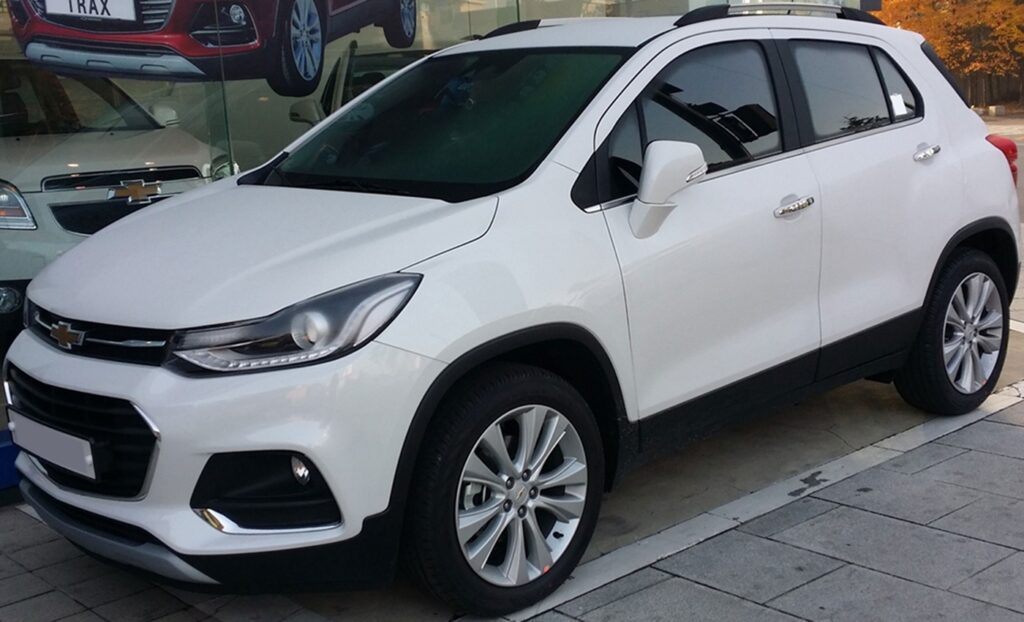
6. **Chevrolet (Chevy Bolt EV and EUV)**
The Chevrolet Bolt EV initially promised to be a game-changer in the affordable electric vehicle market, offering impressive range and practicality at an accessible price point. However, this promising start was soon overshadowed by a series of widespread reports of battery fires, which severely tarnished the Bolt’s reputation and led to an unprecedented recall. The core of the problem was traced to rare but dangerous manufacturing flaws within the battery cells supplied by LG Chem, capable of causing short circuits that would escalate into thermal runaway and, ultimately, vehicle fires.
General Motors responded by issuing a massive recall affecting nearly every Bolt ever produced, advising owners to take drastic precautions such as limiting their charging levels and parking their vehicles outdoors. This created immense frustration and eroded consumer confidence in the battery system, leaving thousands of drivers grappling with significant limitations on their vehicles’ usability. Even after replacement batteries were installed under warranty, some owners continued to report inconsistencies in performance and accelerated degradation, raising questions about the long-term reliability of these new packs.
Adding to these challenges, the Bolt’s battery management system (BMS) was notably less sophisticated compared to those found in leading EV brands like Tesla or Hyundai. While it did perform basic temperature and charging level management, it lacked the advanced predictive diagnostics and finely tuned thermal regulation capabilities that are essential for optimal battery health. Furthermore, early iterations of the Bolt notably lacked a liquid cooling system, making the battery pack more susceptible to overheating and accelerated degradation under high-stress driving or fast-charging conditions.
Even in environments where extreme thermal issues weren’t prevalent, the vehicle’s software did not adapt proactively to user habits or environmental factors, contributing to uneven degradation across the fleet. Chevrolet now faces the arduous task of rebuilding consumer trust after one of the most public and problematic battery recall episodes in EV history. Although many Bolts continue to operate reliably today, the model’s early and severe battery challenges have firmly placed it among EVs associated with frequent battery replacements, driven by either design flaws or urgent safety imperatives.
Read more about: Buyer’s Remorse Hits Hard: 15 Cars Drivers Regretted Purchasing According to Latest Survey Findings

7. **Fiat (500e)**
Fiat’s initial venture into electric vehicles with the 500e was primarily strategic, designed more to meet regulatory requirements in specific markets, such as California, rather than to lead technological innovation. This compliance-car approach significantly influenced the vehicle’s engineering priorities, particularly its battery system. Consequently, the 500e’s battery design, thermal management, and overall energy management systems were comparatively basic and underdeveloped when measured against more robust and purpose-built EV offerings, contributing to premature battery wear and a higher frequency of replacements over time.
A critical factor in the Fiat 500e’s battery degradation was its limited thermal management system. The vehicle lacked advanced liquid cooling, instead relying on either passive or very minimal thermal control mechanisms. This design made the battery pack particularly vulnerable in hot climates or when subjected to aggressive driving and frequent fast-charging patterns. Without adequate cooling, battery cells would inevitably heat up during intensive use, significantly accelerating the internal chemical breakdown that leads to degradation.
While this design limitation might not have presented immediate catastrophic failures, over several years of ownership, many 500e owners began reporting noticeable reductions in driving range and a decline in overall performance. The car’s relatively small battery pack meant that even modest capacity degradation had a disproportionately large impact on its real-world usability; a mere 10% loss in capacity could easily reduce the practical driving range by nearly 10 miles. For drivers relying on the 500e for daily commutes, this quickly led to significant range anxiety and the necessity for more frequent charging, further stressing the already constrained battery system.
Unlike EVs equipped with larger battery packs and intelligent buffer zones, the Fiat 500e offered minimal margin for natural degradation, making battery replacements a more pressing issue after just a few years. Furthermore, Fiat’s limited EV support infrastructure compounded these problems. With minimal investment in nationwide service, parts availability, or specialized technician training for battery diagnostics, many customers found it challenging to schedule service or faced lengthy wait times for replacement components. Fiat has since largely withdrawn from the U.S. EV market, and the 500e’s early exit, combined with its reputation for frequent battery issues, stands as a cautionary tale for automakers who view EVs as mere stopgap solutions rather than long-term commitments.
Read more about: Beyond the Hype: Dissecting EV Battery Longevity and Performance in the Real World
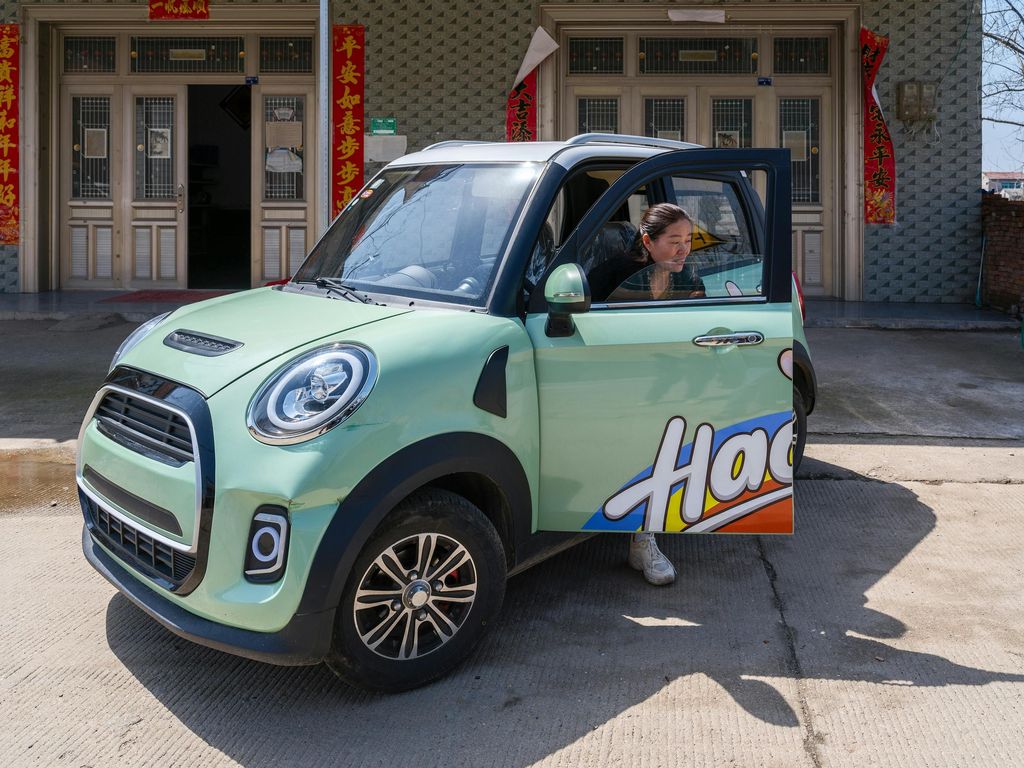
8. **Mini (Mini Electric / Mini Cooper SE)**
The Mini Cooper SE, or Mini Electric, successfully infused the brand’s iconic style and agile handling with an electric powertrain, delivering an undeniably charming driving experience. However, this ‘style-first’ approach appears to have come at the expense of long-term battery durability. The Cooper SE is equipped with a comparatively small 32.6 kWh battery pack, which results in a modest EPA-estimated range of around 110 miles. This compact battery size leaves very little room for buffer zones, meaning that the effects of battery degradation are felt much sooner and more acutely than in EVs featuring larger, more robust battery packs.
One of the primary criticisms leveled against the Mini Electric from its inception was its apparent design as an adaptation of an existing internal combustion platform, rather than being conceived as a dedicated, ground-up EV. This platform compromise directly impacted the battery’s packaging and cooling solutions. The vehicle utilizes a relatively basic thermal management system and lacks the sophisticated battery care tools common in more advanced, longer-range EVs. Consequently, the battery cells are more vulnerable to accelerated degradation, especially during high-load scenarios like fast charging or the spirited driving that Mini enthusiasts typically enjoy.
Over time, this often leads to uneven degradation across the cells, voltage imbalances, and a reduction in usable range that frequently exceeds owner expectations within the first five years of ownership. Moreover, Mini’s battery management system (BMS) does not incorporate advanced features such as predictive charging behavior, usage-based range optimization, or real-time degradation reporting. This omission leaves owners, particularly those new to EVs or less technically adept, without crucial information that could help them proactively mitigate battery wear.
Reports from numerous owners of early Mini Electrics indicate noticeable range drops within just three to four years, which is particularly problematic for a vehicle with such an already modest initial range. While these capacity losses typically aren’t dangerous, they often necessitate battery replacements even before the warranty expires, especially in warmer climates or among drivers who frequently utilize DC fast chargers. As a subsidiary of BMW, Mini has access to world-class engineering expertise, and it is anticipated that future electric Mini models will benefit significantly from BMW’s more advanced battery strategies. However, the current generation of the Mini Electric, despite its undeniable charm, has yet to prove itself as a reliable long-haul EV.
Read more about: From Showroom Shine to Garage Grind: 15 Vehicles That Left Owners Longing for a Refund

9. **Jaguar (I-PACE)**
Upon its launch, the Jaguar I-PACE was met with considerable enthusiasm, positioned as a luxurious and performance-oriented electric alternative to Tesla, boasting a sleek design, impressive performance capabilities, and even some off-road prowess. Beneath this polished exterior, however, the I-PACE has increasingly faced criticism for issues related to battery degradation and charging inefficiencies. These problems have, unfortunately, led many owners to confront early battery replacements and persistent concerns about the vehicle’s long-term reliability, particularly when compared to other premium EVs from brands like Tesla, Audi, and BMW.
A significant contributor to these challenges is Jaguar’s relatively inefficient battery management system (BMS). Early versions of the I-PACE were often plagued by inaccurate range predictions, an overestimation of remaining charge, and erratic thermal management. This combination frequently resulted in unexpected battery depletion, causing considerable frustration for owners who relied on the vehicle for longer journeys. Furthermore, while the I-PACE’s cooling system is technically liquid-based, it has proven to lack the adaptability and fine-tuning observed in the systems of leading EVs from Tesla or Hyundai.
This deficiency means that under high-demand driving conditions or during rapid DC charging, the battery is more susceptible to excessive heat buildup. Such thermal stress accelerates degradation and can, in some instances, trigger thermal derating, where the vehicle’s performance is intentionally reduced to prevent overheating. Reports from long-term owners and fleet operators consistently indicate significant capacity degradation, often exceeding 15–20% within just three to five years of ownership—a notably high figure for a vehicle in the premium segment. In several documented cases, even higher losses have occurred, prompting warranty claims and, in some instances, full battery pack replacements.
Complicating matters, Jaguar’s dealership network has been on a steep learning curve in handling EV-specific issues. Owners have voiced complaints about slow diagnostic processes, limited training for technicians, and significant delays in the availability of parts required for battery replacements or repairs. For a brand actively striving to establish its credibility in the burgeoning EV market, these support challenges only amplify the impact of the technical shortcomings. While Jaguar has demonstrated a commitment to improvement through software updates and specific technical adjustments, many I-PACE owners feel these efforts are ‘too little, too late,’ especially for those who have already experienced substantial battery degradation.
Read more about: Beware These Cars: 10 Models with the Highest Depreciation Rates You Need to Know About

10. **Mercedes-Benz (EQC and Early EQ Models)**
Mercedes-Benz, a name globally synonymous with luxury, precision engineering, and automotive excellence, embarked on its first-generation electric vehicle journey with the EQC and other early EQ-series models. However, these initial offerings have been met with mixed reviews, particularly concerning battery longevity. Despite being positioned as a premium alternative to established EV players like Tesla, the EQC and its early siblings frequently fell short of delivering the battery endurance expected within this high-end segment. Many owners reported faster-than-average degradation, less efficient range retention, and disappointing performance in cold weather conditions, all contributing to a higher incidence of battery servicing and even replacements during the vehicles’ initial years of operation.
The core of the EQC’s challenges lies in its platform, which was adapted from an internal combustion engine vehicle rather than being purpose-built as a dedicated EV from the ground up. This legacy architecture necessitated compromises in critical areas such as battery cooling, placement, and overall structural design. While a battery cooling system was present, it was not as adaptive or comprehensive as those found in newer, more competitive EV models, particularly in its ability to manage thermal balance effectively during extended drives or rapid charging sessions. Without precise and adaptive cooling, battery cells can experience uneven heating, which inevitably leads to imbalanced wear and, over time, increased cell failures.
As more real-world data from owners continues to accumulate, the pattern of early degradation, particularly in regions with warmer or colder climates, has become increasingly evident. Furthermore, Mercedes’ initial battery software was notably conservative, deliberately limiting access to a portion of the battery’s theoretical capacity. However, this conservatism did not adequately translate into optimized charge curves or superior thermal performance. Combined with the vehicle’s considerable weight and only moderate energy efficiency, the result was battery packs that were subjected to more stress than anticipated, even during routine daily driving scenarios.
While Mercedes-Benz offers a robust battery warranty, typically covering 8 years or 100,000 miles, the inconvenience and the relatively high frequency of battery-related issues have frustrated many luxury buyers who rightfully expect a trouble-free ownership experience at this price point. Some early adopters even reported needing full pack replacements within the first four years of ownership, an outcome that significantly undermines the brand’s premium positioning and promises.
Mercedes-Benz is actively and aggressively improving its EV platform strategy, with new dedicated electric architectures, such as MMA and MB.EA, slated for debut in the coming years. Nevertheless, the legacy of the EQC and its early EQ models serves as a clear illustration of the critical importance of launching a mature, fully optimized battery and thermal management system from the outset. Until these next-generation platforms unequivocally prove their long-term durability in real-world conditions, Mercedes-Benz, despite its prestige, remains among the group of EV brands that have been associated with higher-than-expected battery replacement rates, particularly during the crucial early years of ownership.
***
Beyond individual brand performance, a broader truth about EV battery life is emerging, one that challenges many common misconceptions and offers a more optimistic outlook for the future of electric mobility. In an era where nearly one in five cars sold in 2023 was electric, persistent concerns about battery longevity have been a significant barrier to wider adoption. Sensationalized media reports often depict used EVs as rapidly deteriorating, creating what’s often referred to as ‘battery anxiety’ among potential buyers.
A groundbreaking comprehensive study by AVILOO, however, has provided unprecedented, real-world insights that aim to debunk these myths. This extensive research analyzed data from over 7,000 electric vehicles, with mileage extending up to 300,000 kilometers, diverging from previous studies that primarily relied on laboratory conditions. By utilizing actual vehicle data, the AVILOO study captured a diverse range of driving and charging behaviors across multiple manufacturers, offering a more accurate picture of battery performance in everyday use.
Contrary to widespread popular belief and often alarmist narratives, the study revealed remarkably positive findings regarding EV battery longevity. The most significant result showed that the vast majority of EV batteries manage to retain well over 80% of their original capacity even after accumulating an impressive 200,000 kilometers on the road. This contradicts the notion of rapid and continuous degradation, presenting a far more robust reality.
The research further clarified that while there is an initial period of more rapid capacity loss, this degradation quickly stabilizes. P3 fleet data, which underpinned part of the study, demonstrated that nearly all batteries maintained above a 90% State of Health (SoH) after three to five years of intense use, indicating a strong ability to withstand the rigors of regular operation. This suggests that once past a certain initial break-in period, battery performance becomes remarkably consistent.
To better understand how batteries age, the study explained two primary mechanisms: calendar aging and cyclical aging. Calendar aging refers to the chemical changes that occur within a battery over time, regardless of whether the vehicle is being driven. Cyclical aging, on the other hand, is the degradation that results directly from the repeated processes of charging and discharging. Interestingly, the research found that most of the significant capacity degradation typically occurs within the first 30,000 kilometers of a vehicle’s life, after which the aging process becomes almost linear and dramatically slows down, offering a long plateau of stable performance.
The study also translated its findings into practical, actionable advice for current and prospective EV owners looking to maximize their battery’s lifespan. To preserve battery health, it is recommended to park vehicles in moderate temperature environments, avoiding extreme heat or cold whenever possible. For prolonged idle periods, maintaining the battery charge between 10-50% is advised, as this range is less stressful on the cells.
Additionally, owners should aim to avoid frequent fast charging and instead rely more on slower charging methods for daily use. Optimal charging cycles involve keeping the battery’s state of charge between 20-80%, preventing the stress associated with full charges or deep discharges. Finally, adopting moderate driving behaviors, which includes steering clear of extreme acceleration and high-speed, long-distance journeys, can significantly contribute to battery longevity.
From a warranty and economic standpoint, the findings are equally reassuring. Current standard EV battery warranties typically span 8 years or 160,000 kilometers, with manufacturers exhibiting increasing confidence in the long-term durability of their battery packs. The AVILOO study confirmed that it is exceptionally rare for batteries to fall below 70% of their original capacity during this warranty period, providing substantial peace of mind for consumers.
Beyond their first life in a vehicle, EV batteries retain considerable value, challenging the notion of them becoming mere waste. They can be effectively repurposed for secondary applications, such as home energy storage systems, extending their utility and economic value. Furthermore, even after these secondary lives, batteries can be recycled to recover valuable materials like lithium, nickel, and copper, contributing to a circular economy and reducing environmental impact.
This extensive research transcends mere technical analysis; it represents a crucial advancement in addressing consumer concerns and significantly accelerating the adoption of electric vehicles globally. By offering transparent, data-driven insights, the AVILOO study plays a vital role in combating misinformation and actively building greater trust in the rapidly evolving landscape of electric mobility technology. It paints a clear picture: the future of electric mobility is not only greener but also increasingly reliable and economically viable, underpinned by robust battery technology that is proving its mettle over the long haul.
Read more about: Beyond the Hype: Dissecting EV Battery Longevity and Performance in the Real World
Indeed, the journey of electric vehicles is just beginning, and with each passing year, the technology matures, delivering more compelling reasons for drivers to make the switch. From the advancements in battery durability to the debunking of old myths, the road ahead for EVs looks brighter, longer, and more reliable than ever.

